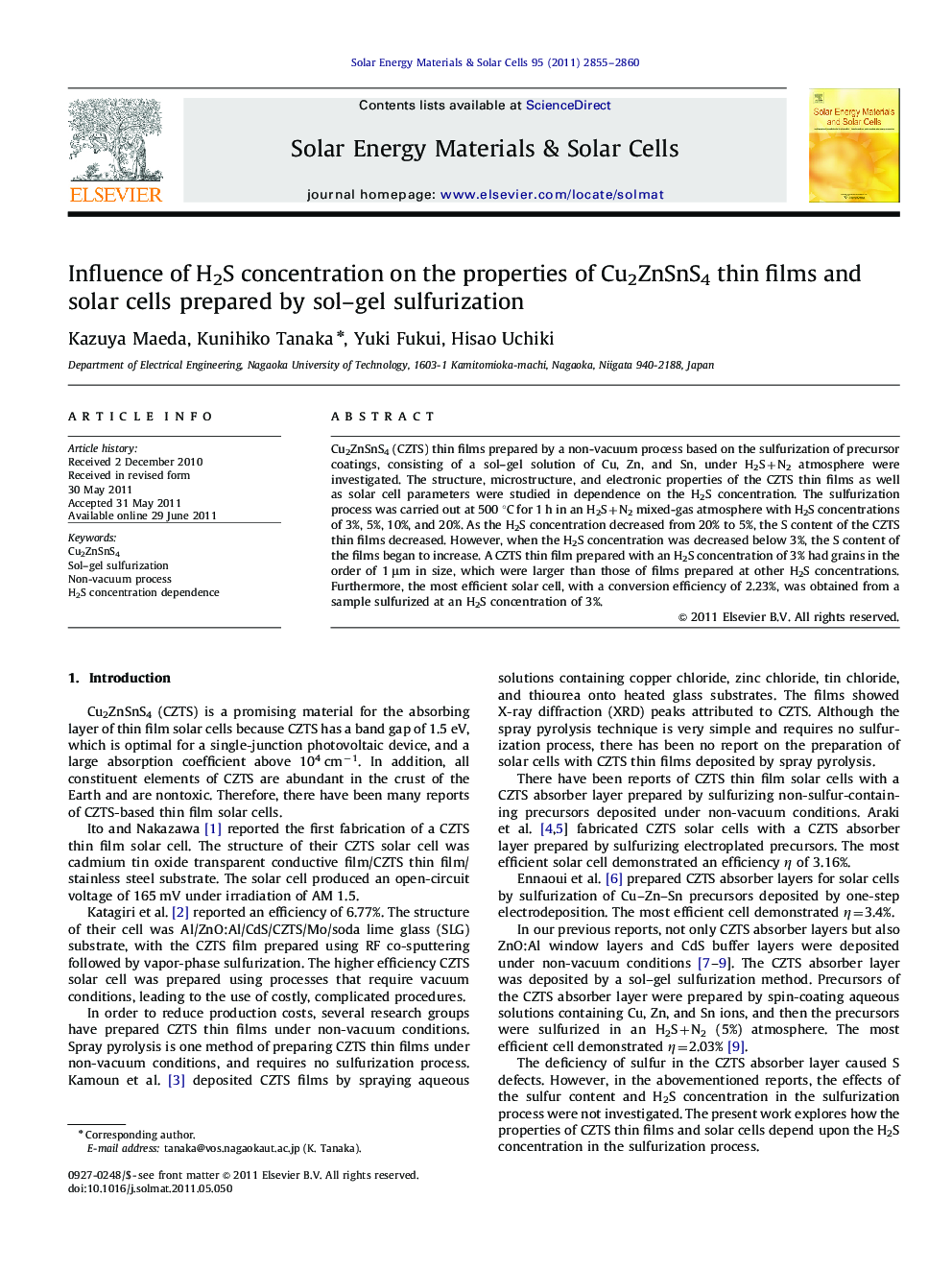| Article ID | Journal | Published Year | Pages | File Type |
|---|---|---|---|---|
| 78620 | Solar Energy Materials and Solar Cells | 2011 | 6 Pages |
Cu2ZnSnS4 (CZTS) thin films prepared by a non-vacuum process based on the sulfurization of precursor coatings, consisting of a sol–gel solution of Cu, Zn, and Sn, under H2S+N2 atmosphere were investigated. The structure, microstructure, and electronic properties of the CZTS thin films as well as solar cell parameters were studied in dependence on the H2S concentration. The sulfurization process was carried out at 500 °C for 1 h in an H2S+N2 mixed-gas atmosphere with H2S concentrations of 3%, 5%, 10%, and 20%. As the H2S concentration decreased from 20% to 5%, the S content of the CZTS thin films decreased. However, when the H2S concentration was decreased below 3%, the S content of the films began to increase. A CZTS thin film prepared with an H2S concentration of 3% had grains in the order of 1 μm in size, which were larger than those of films prepared at other H2S concentrations. Furthermore, the most efficient solar cell, with a conversion efficiency of 2.23%, was obtained from a sample sulfurized at an H2S concentration of 3%.
Graphical abstractFigure optionsDownload full-size imageDownload as PowerPoint slideHighlights► CZTS absorber layer was deposited by the sol–gel sulfurization method. ► CZTS films were fabricated by sulfurizing precursors with various H2S concentrations. ► CZTS thin film prepared with 3% H2S had larger grains. ► CZTS solar cell of 3% H2S demonstrated the highest efficiency of 2.23%.
